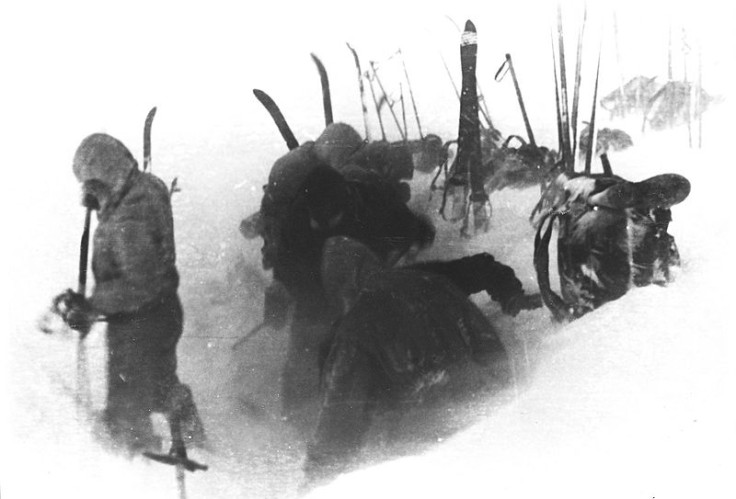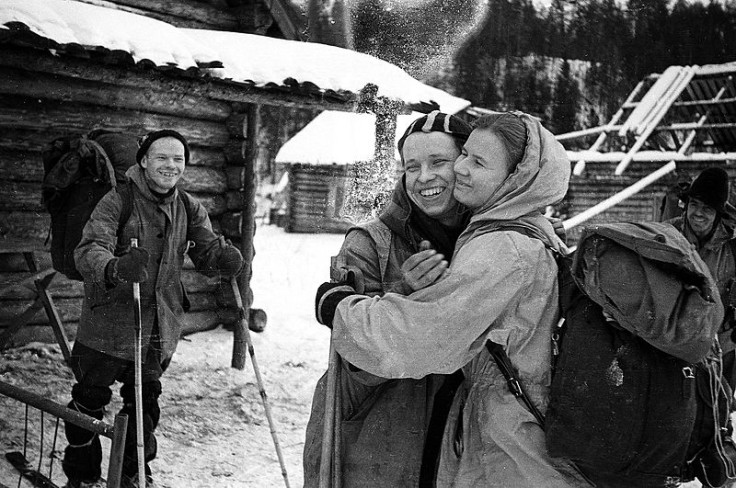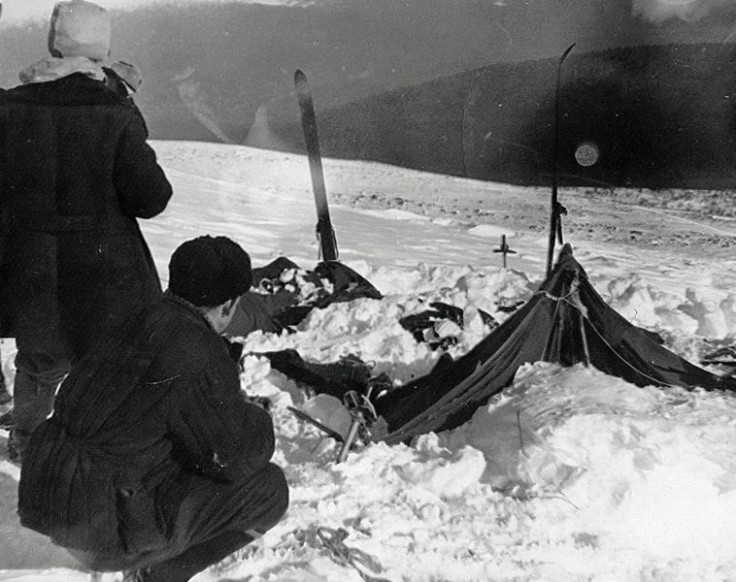Dyatlov Pass Mystery: Rare Wind Phenomenon Caused Madness and Death of Expert Skiers

In 1959, nine experienced skiers mysteriously died on an expedition in the northern Ural mountains, in an incident which has not been explained until today.
Eight men and two women, who were all students at Ural Polytechnic, set off to conquer Dead Mountain exactly 55 years ago. Led by Igor Dyatlov, the group aimed to reach Otorten, a mountain in the region.
The difficult route they took, combined with the severe Siberian weather, was labelled a Category III. Each member was an experienced skier and all had previously gone on lengthy ski tours and difficult expeditions.
The group took a train at Ivdel, a city in the province of Sverdlovsk, before driving to Vizhai by truck. One of the members, Yuri Yudin, was forced to abandon the trip due to illness and stayed behind in Vizhai. Unbeknown to Yudin, his illness saved his life.
After preparing for the trip, the group set off without Yudin. Dyatlov had warned the trip may take longer than expected, so their delayed return did not cause immediate concern.

Diaries and cameras found on the pass made it possible to track the group's route. Planning to set up a camp on the other side, the group set off through the pass. Shortly afterwards, the group lost their way in the poor weather conditions and began deviating west towards peak of Kholat Syakhyl. Realising their mistake, the nine students set up camp just over 1km from a sheltered, forested area.
After two weeks with no sign of the group, it was clear something had gone wrong. A search team despatched into the area, which was around -24 degrees, found an abandoned tent. It had been ripped open from the inside, with clothes and shoes left behind.
Their bodies were found in the snow a few metres away, with little clothing to fight off the fierce winds and snow. Investigators believe they tore open their tent, setting off into the snow without proper clothing. Six of the students were found straight away, while the other three were discovered at the bottom of a ravine three months later, with fractured skulls and other injuries. The area was named Dyatlov Pass after the leader of the group.
The mystery of why the experienced skiers died in the strange circumstances has been unexplained for over five decades. Donnie Eichar, an American author who has investigating the incident for five years, has suggested an intriguing phenomenon called a Karmen vortex street caused the deaths.

Named after Theodore von Karman, a Hungarian physicist, the phenomenon is the result of an unusual wind pattern which causes uneasiness, terror and illness in humans by producing infrasound.
Infrasound, a low-frequency sound, is below the limit for human hearing. Vladimir Gavreau, a Russian-born French scientist, pioneered the research into the tiny air vibrations in the 1960s. When his laboratory assistants began to complain of ear ache and sickness, Gavreau deduced microscopic air waves were being projected from a faulty fan. The feeling, while the noise itself cannot be heard, caused panic, fear, confusion and sickness.
In 2003, researchers in the UK held an experiment which exposed 700 people to music laced with the infrasound waves. Around one quarter of those tested reported anxiety, sorrow, uneasiness and pressure on the chest. These effects, according to Karman, are what caused the Russian students to run into the freezing cold to their deaths.
According to Karman, the strong winds in the Ural mountains could have instigated this strange occurrence. When a wind flow is disrupted, the moving air can create a vortex which travels away from the source in a fan shape. In high winds, the vortices can cause tornadoes which produce infrasound.
The tent, found down wind from the peak of the mountain, was in the prime position to feel the effects of the minute air waves. Causing uneasiness and fear, along with shortness of breath and dread, Karman asserts the hikers fled their tents without realising the consequences.
Various theories, including radiation poisoning, surround the mystery. The final verdict stated the students died of a "compelling natural force", which might mean an avalanche killed the skiers, yet there is a lack of evidence to support this.
According to a 12-year-old Yury Kuntsevich who attended the funerals, however, the bodies had a "deep brown tan". It was also found that the clothes of a few victims contained high doses of radioactive contamination.
Other reports included a military cover up, as large amounts of scrap metal in the area lead to speculation that the military had previously used the area. The Baikonur Cosmodrome, where R-7 rockets were tested, and the Novaya Zemlya archipelago, a major nuclear testing ground for the Soviet Union, both lie in the vacinity of the group's last known camp.
© Copyright IBTimes 2025. All rights reserved.




















